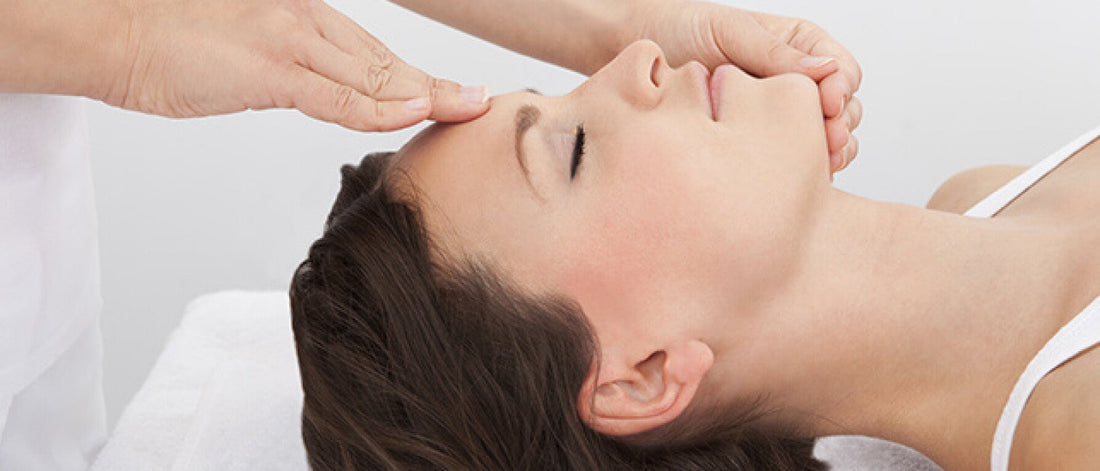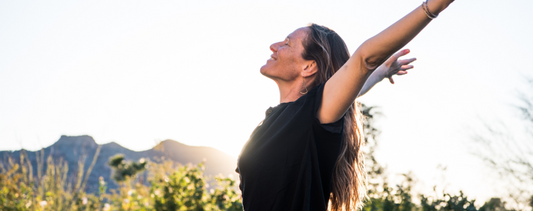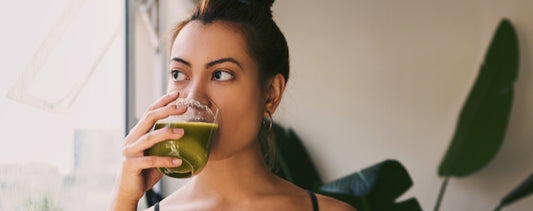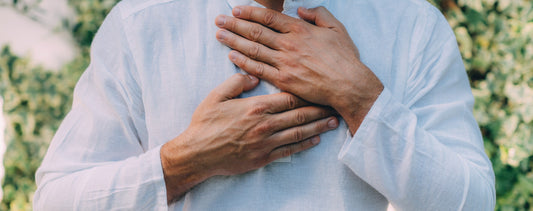Long ago, when your hunter-gatherer ancestors came across a bear in the woods, they experienced what is now called stress: elevated heart rate, quick breathing, and tense muscles. This response quickened their reflexes, spurring them to fight or run—which would not only potentially save their lives, but also process the stress response out of their systems.
Unfortunately, these days, you can’t fist fight rush-hour traffic or run from a demeaning boss, so the stress response can become trapped in your body and turn chronic. Stress can manifest as a variety of symptoms—tension headaches or pain like a sore back—or, if chronic, can contribute to conditions such as diabetes and heart disease.
Stress is no joke, and since you don’t have as many opportunities to leap into fight or flight and process stress as your ancestors did, it’s important to have a stress-management plan. In addition to typical exercise, deep breathing, and meditation strategies, consider acupressure—a self-administered therapy that has shown in research to effectively decrease stress. You can start with these eight common acupressure points—and it’s best to check with your physician or health care provider before you begin.
LR 3—Tai Chong:On the top of the foot, along the webbing between the first and second toes, in the depression before the joint.
KI 1—Yong Quan:On the sole of the foot, at the point of lighter and softer skin, approximately in line with the space between the second and third toes.
LI 4—He Gu:On the back of the hand, at the apex of webbed triangle between the thumb and the index finger.
PC 6—Nei Guan:On the front of the forearm, between the two tendons that run down the center of the forearm, two cun from the wrist.
GB 21—Jian Jing:On the top of the shoulder, halfway between the shoulder point and the base of the neck.
BL 10—Tian Zhu:On the back of the neck, one cun from the base of the skull, on the rope-like muscle approximately one cun from the spine.
LU 1—Zhong Fu:On the upper chest, six cun from the midline, in the space below the first rib.
GV 24.5—Yin Tang:On the forehead, midway between the eyebrows, at the point of the third eye.
Tip: Teach a loved one how to give you acupressure—when receiving it from someone else, you can more fully relax.
Editor’s Note: The information in this article is intended for your educational use only; it does not necessarily reflect the opinions of the Chopra Center's Mind-Body Medical Group; and is not a substitute for professional medical advice, diagnosis, or treatment. Always seek the advice of your physician or other qualified health providers with any questions you may have regarding a medical condition and before undertaking any diet, supplement, fitness, or other health program.
Unfortunately, these days, you can’t fist fight rush-hour traffic or run from a demeaning boss, so the stress response can become trapped in your body and turn chronic. Stress can manifest as a variety of symptoms—tension headaches or pain like a sore back—or, if chronic, can contribute to conditions such as diabetes and heart disease.
Stress is no joke, and since you don’t have as many opportunities to leap into fight or flight and process stress as your ancestors did, it’s important to have a stress-management plan. In addition to typical exercise, deep breathing, and meditation strategies, consider acupressure—a self-administered therapy that has shown in research to effectively decrease stress. You can start with these eight common acupressure points—and it’s best to check with your physician or health care provider before you begin.
How Acupressure Works
Acupressure can help activate your body’s self-healing mechanisms—the release of endorphins and increased blood flow. It stimulates the same points that are used in acupuncture—with massage-like pressure rather than needles.Stress-Reducing Point Locations
Acupressure points can be located by anatomical landmarks—either muscle groups or bony structures. Some of them are located by a measurement called “cun,” which is approximately the width of your thumb. These pressure points can be stimulated on one or both sides of your body to help reduce stress.LR 3—Tai Chong:On the top of the foot, along the webbing between the first and second toes, in the depression before the joint.
KI 1—Yong Quan:On the sole of the foot, at the point of lighter and softer skin, approximately in line with the space between the second and third toes.
LI 4—He Gu:On the back of the hand, at the apex of webbed triangle between the thumb and the index finger.
PC 6—Nei Guan:On the front of the forearm, between the two tendons that run down the center of the forearm, two cun from the wrist.
GB 21—Jian Jing:On the top of the shoulder, halfway between the shoulder point and the base of the neck.
BL 10—Tian Zhu:On the back of the neck, one cun from the base of the skull, on the rope-like muscle approximately one cun from the spine.
LU 1—Zhong Fu:On the upper chest, six cun from the midline, in the space below the first rib.
GV 24.5—Yin Tang:On the forehead, midway between the eyebrows, at the point of the third eye.
Acupressure Technique
Find a comfortable position and focus on deep breathing. Press your finger firmly with massage-like pressure onto an acupressure point and move in a small circular or up-and-down motions for several minutes. There is no limit as to how often you can stimulate a point to relieve pain.Tip: Teach a loved one how to give you acupressure—when receiving it from someone else, you can more fully relax.
Editor’s Note: The information in this article is intended for your educational use only; it does not necessarily reflect the opinions of the Chopra Center's Mind-Body Medical Group; and is not a substitute for professional medical advice, diagnosis, or treatment. Always seek the advice of your physician or other qualified health providers with any questions you may have regarding a medical condition and before undertaking any diet, supplement, fitness, or other health program.






















